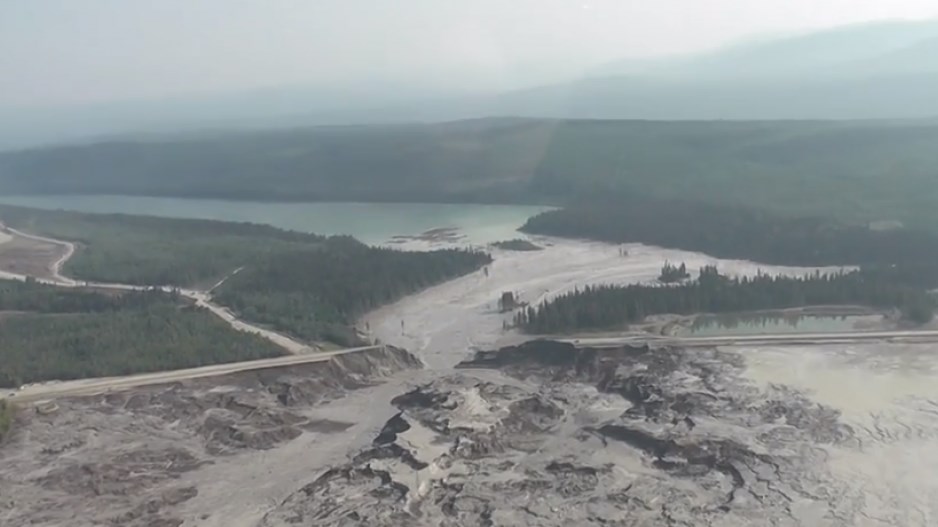Preliminary testing of water in Quesnel Lake has determined the water is within federal and provincial drinking water guidelines, despite the collapse of a tailings pond dam that dumped 10 million cubic metres of water and 4.5 million cubic metres of mine slurry into Polley and Quesnel lakes.
The testing also indicates that there is likely to be no impact on fish and other aquatic life, the B.C. Ministry of Environment said in a release.
However, a drinking water ban remains in place pending further sampling.
Tailings from the Mount Polley mine emptied into local waters on August 3. A public health advisory went out advising people not to drink water drawn from Polley Lake, Hazeltine Creek, Quesnel Lake and the Quesnel River system to the Fraser River. Those restrictions remain in effect.
The Ministry of Environment tested for things like pH levels, turbidity, suspended solids, and dissolved metals.
Ironically, the one contaminant it did detect is not likely related to mine tailings: E.coli bacteria. Testing found levels of 1 E.coli bacterium per 100 millilitres.
“E.coli concentrations were below or just above the guideline at typical concentrations for lakes in B.C. and well below the disinfection and partial treatment guidelines,” the ministry said in a release.
According to the ministry, E.coli is “not a typical contaminant in tailings and results are thus likely not due to the tailings discharge.”
Apart from the potential impacts on human health, another major concern is the potential impact of contaminants on salmon.
The Quesnel Lake system is a significant spawning ground for Fraser River sockeye, which are just now returning to the lakes and rivers where they hatched.
“While these initial tests are encouraging, this has still been a devastating accident that released five millions cubic metres of toxic sludge that remains an environmental threat,” said river conservationist Mark Angelo.
He said slurry that is still in Polley Lake and Hazeltine Creek is still a concern, because it’s this fine silt-like mine waste that may contain contaminants that are harmful to aquatic life.
As for the cleanup that will be required to remove contaminants and restore habitat, Angelo said, “that will be an incredibly expensive undertaking, given the amount of debris that is there combined with the area’s remoteness.”
A closure on salmon fishing remains in effect. The Department of Fisheries and Oceans has a closure for all salmon fishing on the Cariboo River from the confluence of the Quesnel River to the confluence of Seller Creek, and on the Quesnel River itself downstream from Poquette Creek.




